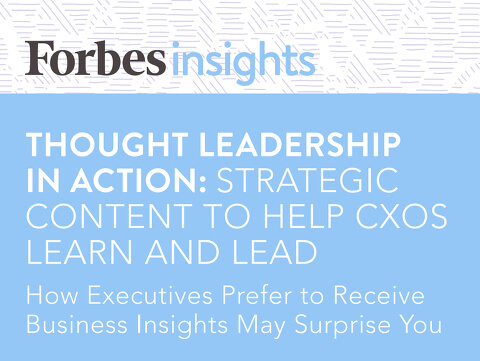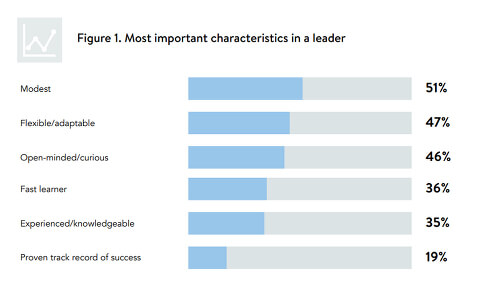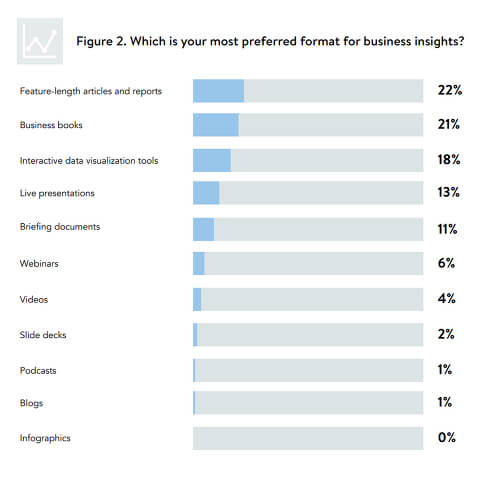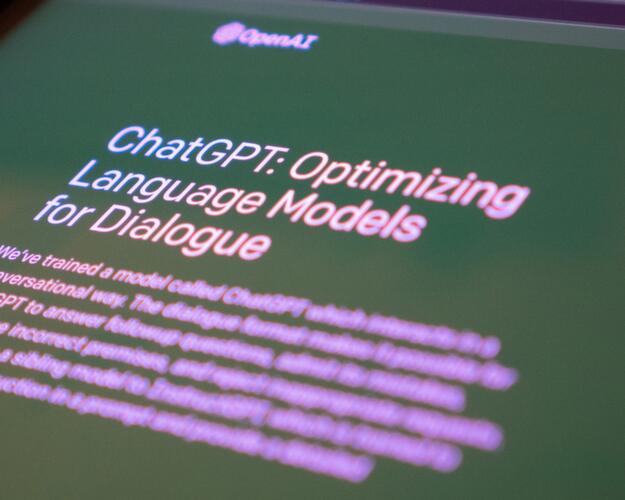What do CXOs want from Thought Leadership?
Forbes Insights’ Thought Leadership in Action

This month’s Deep Dive is a bit meta – we look at a thought leadership report on writing thought leadership reports.
Thought Leadership in Action, by Forbes Insights and Deloitte, is still one of the best, data backed reports on thought leadership. In the absence of anything on the subject of this weight since*, it is worth a good look.
What is it?
A few years back, Forbes Insights and Deloitte conducted a survey of 300 CXOs globally to understand how they liked to consume information. At a time when marketing had decided people had short attention spans and needed bitesize information that could be measured in clicks, the results may have taken many by surprise.
The significant factor is that it looked specifically at CXOs, not a general audience. Much marketing thinking no doubt holds for a general audience, but when you’re targeting a specialist, senior audience making big budget decisions, the game changes.
Drawing on this, we look at what CXO level Thought Leadership should include, and how to present it.
CXOs want strategic content
“Thought leadership is more important than ever, because there is more that CXOs need to learn than ever before, and much of what they’re dealing with is new to them”, opens the report.
This audience is deeply concerned about disruption from global trends such as Forth Industrial Revolution Technologies. They crave expert advice on how to navigate these challenges. Tomorrow’s leaders will be judged on their ability to think critically and spot, understand and act upon trends, rather than on past experience (see chart). They need information and insight to do so.

As Satya Nadella, the much-lauded Microsoft’ CEO, said, “We want to push to be more of a learn-it-all culture than a know-it-all culture”.
CXOs want evidence-based content to inform decisions
Relying on gut instinct is becoming a thing of the past. CXOs want Thought Leadership that provides informed, well-researched credible expert insight.
Data is a vital aspect of this. “Understanding data is critical for setting strategy” says Gina Pingitore, managing director, Deloitte Center for Industry Insights. “That’s why thought leadership needs to present CXOs with data-based insights that are credible and relevant to their organisations and lead to business outcomes.”
This is not just about quantitative data on customer behaviour, they are also interested in the experience of others in their industry to help form their own strategy. 71% believed that traditional surveys remain a valuable source of business insight.
CXOs will invest time in good content
Despite the trend towards ‘snackable’ content, CXOs prefer longer, more in-depth pieces. Feature-length articles and reports were the top choice, followed by books (see chart).
Bruce Rogers, Chief Insights Officer of Forbes Media, said: “CXOs need to think and act strategically, which is why they more often opt for longer pieces that take them from hypothesis, through case studies, to conclusion, and are based on credible data.”
Many liked interactive data visualisation tools but none favoured infographics. This suggests an appetite for well presented data they can pick apart and trust, but not data which had been framed to suit someone else’s agenda.
CXOs still find value in short briefing documents, but they consider it “a gateway to more content.”
And for longer pieces, many (though by no means all) preferred print to digital.

Writing strategic content
The report concludes with a few tips from Forbes writers on how to create such content. We summarise the key points, which we at Memetic wholeheartedly agree with.
- Know your audience (obviously)
- Thought Leadership should ‘Tell me something I don’t know’
- Start with a challenge but quickly move to the solution(s)
- Show real-life examples of how companies handle (or mishandle) similar problems.
- Don’t be a fearmonger; readers will see through it
- Break up content with clear subheadings which draw the reader through
- Include actionable takeaways
Thought Leadership Today
As noted, this report came out back in 2015. Has it dated?
We don’t think so. In fact, as media becomes more clickbaity – and global business challenges become more complex - there is even more need for weighty insight from non-media organisations.
Whilst we have not (yet) replicated this research, we have been testing its central ideas amongst our senior contacts, and find they consistently hold. A cross section of senior people we know all take time to read reports from thought leaders across their industry.
CXOs, then, are most interested in strategic content. As the report says: “Such content delivers a narrative based on curated data that spells out the hypothesis and proceeds to prove or dis- prove it. Strategic content, in other words, provides guidance and actionable takeaways.”
Developing CXO level Thought Leadership: Key Takeaways
- Address a specific strategic challenge for your audience, and one where they crave insight
- Take the reader through a clear narrative from hypothesis, case studies or examples, to conclusion
- Base it on credible, transparent data and/or informed expert insight
- Present in multiple formats, print and digital, for different audiences
- Use short form articles/blogs, social media posts as teasers to capture interest and guide your audience to the full content
For more insights like this, sign up to our newsletter.









